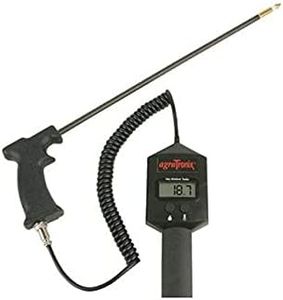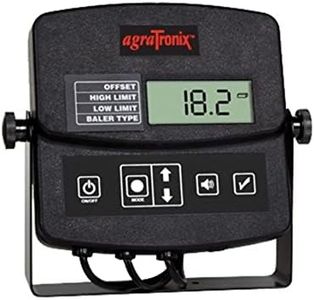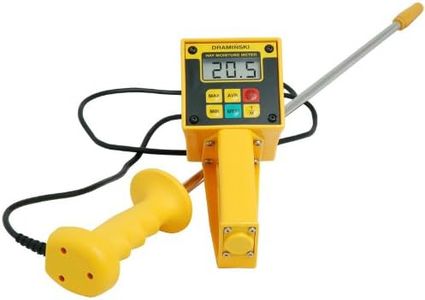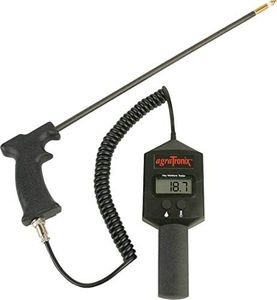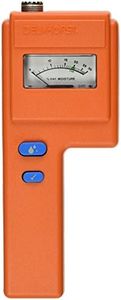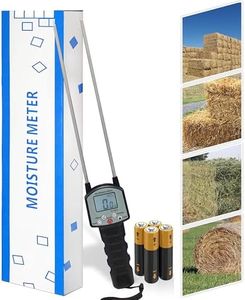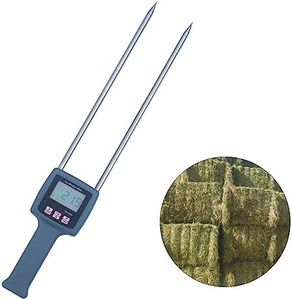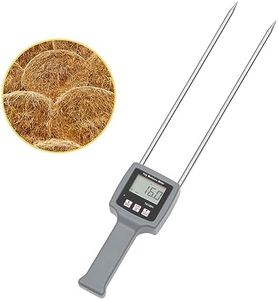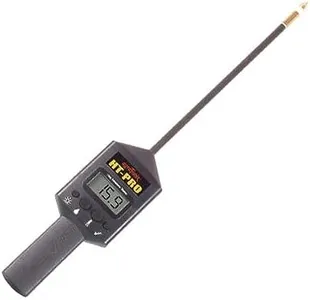We Use CookiesWe use cookies to enhance the security, performance,
functionality and for analytical and promotional activities. By continuing to browse this site you
are agreeing to our privacy policy
10 Best Hay Moisture Testers
From leading brands and best sellers available on the web.Buying Guide for the Best Hay Moisture Testers
Choosing the right hay moisture tester is essential for anyone involved in harvesting, baling, or storing hay. The moisture content of hay determines its quality, safety, and storage longevity. Too much moisture can lead to mold growth and even spontaneous combustion, while too little moisture can cause unnecessary loss of nutrients. When shopping for a hay moisture tester, understanding how different specifications impact accuracy, usability, and durability is key. It is important to consider where and how you will use the tester—whether in the field, barn, or storage area—and what levels of precision are needed for your particular operation.Measurement RangeMeasurement range refers to the lowest and highest moisture percentages the tester can read. This is important because different types of hay and storage needs require you to test across a variety of moisture contents. Basic testers might only cover the usual safe range for baling, while more advanced ones offer a wider span, detecting both very wet and very dry hay. If you mainly check hay for safe baling, a typical range (about 8%–40%) may be enough. If you need to detect extremely high or low moisture, look for broader ranges. Think about your hay types and when you usually measure—this will guide you to the right measurement range.
AccuracyAccuracy tells you how close the readings are to the real moisture content. This matters because inaccurate readings can lead to poor storage decisions, spoilage, or safety issues. Simple, less expensive models may be off by several percentage points, while more advanced testers provide high accuracy. If you need to make critical decisions based on the results, such as for commercial sales or storage, aim for a tester with higher accuracy. For more general, routine checks, some tolerance is acceptable.
Probe LengthProbe length is about how deeply the tester can reach into a hay bale. Short probes can only measure the surface layers, which may not fully represent the internal moisture. Long probes give a better picture of the bale’s core, where moisture can be higher. Select a probe length based on the type and size of hay bales you handle. For small or loose bales, a shorter probe may be fine; for large, dense bales, a longer probe ensures you check the center. Always consider ease of use and storage, too.
Display TypeDisplay type describes how the tester shows the moisture reading—analog (with a moving needle) or digital (with numbers on a screen). Analog displays are tough and simple but may be harder to read precisely, especially in low light. Digital displays are easier to read, can offer extra information (like averages or temperatures), and can be more user-friendly for people who are new to testing. If you prefer simplicity and durability, analog might be enough. For precise, easy-to-read results, choose digital.
Calibration OptionsCalibration options explain whether and how you can adjust the tester’s readings to keep them accurate. Over time and with frequent use, testers might drift and need recalibration. Some models are pre-calibrated with no user adjustment needed, while others let you recalibrate for different hay types or over time. If you’ll use the tester often, or with different hay varieties, the ability to calibrate is important. Occasional or single-type users may not need this feature.
Durability and Weather ResistanceDurability and weather resistance describe how well the tester holds up to field conditions like drops, dust, or moisture. Since hay testing often happens outdoors or in barns, a tester should be able to withstand some rough treatment and exposure. Sturdier testers may use reinforced materials or have weatherproof cases. If you expect frequent outdoor use or rough handling, prioritize ruggedness and resistance to water or dust to ensure the tool lasts over time.
